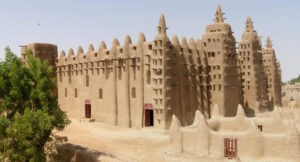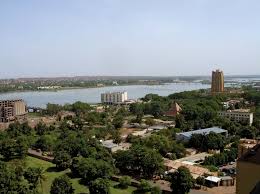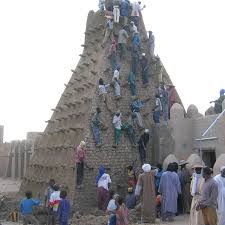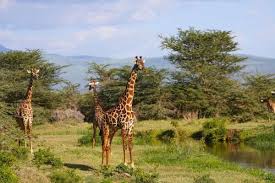Mali, a landlocked country in West Africa, is rich in cultural heritage, historical landmarks, and breathtaking landscapes. With a blend of ancient traditions and modern influences, Mali offers a unique travel experience.
Here are six must-visit places that showcase the beauty and diversity of this remarkable nation.
Djenné

Djenne is home to the largest mud brick building in the world, the Great Mosque of Djenne, another UNESCO World Heritage Site. This architectural marvel, constructed in the 13th century, showcases the beauty of Sahelian design and is an excellent representation of the region’s cultural identity. Djenne also hosts a vibrant market every Monday, where local artisans sell pottery, textiles, and other handmade crafts.
Bamako

As the capital city of Mali, Bamako is a vibrant hub of culture and commerce. Visitors can explore the National Museum of Mali, which houses an impressive collection of artifacts that reflect the country’s rich history. The bustling markets, such as the Grand Marché, offer an authentic taste of local life, where travelers can shop for handicrafts, textiles, and spices. The city is also known for its lively music scene, with various venues featuring traditional Malian music.
Timbuktu

Another historical gem in Mali that should not be missed is Timbuktu, often referred to as the “City of Gold.” While the city itself isn’t literally made of gold, it was a significant trading hub known for its wealth derived from gold, ivory, and salt. This prosperity transformed Timbuktu into an intellectual center that attracted mathematicians and astronomers, enhancing its cultural importance.
The primary historical landmark in Timbuktu is the Djinguereber Mosque, which stands tall above the city with its impressive central minaret. This mosque served as both a place of worship and a madrasa, an educational institution. Having undergone restoration, it provides an excellent opportunity for visitors to appreciate the grandeur of this ancient city.
An essential aspect of Timbuktu’s historical significance is the Timbuktu Manuscripts. Thousands of these manuscripts were secretly transported out of the city during the political turmoil of 2012, documenting centuries of knowledge in fields such as astronomy and philosophy. They reflect the academic brilliance of Timbuktu during its peak and can be viewed online, enabling visitors to engage with the city’s rich history before their arrival.
Boucle du Baoulé Biosphere Reserve

The top destination in Mali for experiencing natural beauty is the Bafing Biosphere Reserve, also known as Bafing National Park. Established in 2000 as a protected area, it is renowned for its commitment to preserving biodiversity. Visitors to Mali can admire the remarkable variety of animal and plant species that inhabit the park’s expansive 6,767 square kilometers.
The reserve is home to numerous wildlife species, including large mammals such as elephants and hippos. Additionally, the Wild Chimpanzee Foundation recognizes Bafing as a critical habitat for these endangered primates. Significant efforts have been made to safeguard these animals through population monitoring and promoting sustainable resource use among local communities.
The park encompasses diverse ecosystems, ranging from savannahs to wetlands, which support various animal populations. It is part of UNESCO’s Man and the Biosphere Programme, aimed at protecting natural environments. Although it does not receive as many visitors as other African wildlife reserves, it offers a fantastic opportunity for travelers in Mali who appreciate observing animals thriving in their natural habitats.
Ségou
A charming yet significant town in Mali that appeals to culture enthusiasts is Ségou. Situated 235 kilometers northeast of Bamako, Ségou played an important role in the Bambara Kingdom during the 18th and 19th centuries. Under French colonial rule, much of this influence is still visible in the town’s architecture.
One of the highlights of Ségou is its vibrant arts and crafts scene. The city is celebrated for its artisanal products, including pottery, textiles, and Bambara carvings. As you wander through the lively local markets, you can purchase these unique items and engage in haggling with vendors, fostering meaningful connections with the traders.
Recognized as the cultural capital of Mali, Ségou hosts numerous exciting events throughout the year that showcase its artistic accomplishments. The most prominent of these events is the Festival sur le Niger, held annually in February. This festival features a diverse program of art, dance, music, crafts, and more, perfectly blending traditional culture with contemporary arts. It stands out as one of the most enjoyable experiences in Mali.
Dogon Country

If you’re looking to escape the urban hustle, a visit to Dogon Country is a must. Situated near the border of Burkina Faso, this region is home to the Dogon people, an ethnic group renowned for their rich culture, art, and unique cliffside settlements.
Dogon Country is a popular destination for tourists seeking to understand the lifestyles of indigenous communities. During your visit, you’ll have the opportunity to witness traditional masked dances and admire intricate wooden sculptures, providing valuable insights into their way of life and spiritual beliefs.
One of the highlights of Dogon Country is the Bandiagara Escarpment, a UNESCO World Heritage site that showcases stunning traditional Dogon architecture, including homes, granaries, and Togu Na—communal meeting spaces. The Dogon people are celebrated for their oral traditions, so be sure to take the time to listen to their storytellers and engage with their vibrant heritage.
Mali boasts a wealth of destinations that cater to various types of travelers. Whether you’re seeking historical insights, natural getaways, or cultural experiences that reveal the local way of life, you’re sure to discover attractions in Mali that meet your interests.
With its ancient sites and stunning landscapes, Mali captivates visitors with its unique charm. The country provides an opportunity to explore pristine scenery and engage with indigenous communities, broadening your perspectives and offering a glimpse into a completely different way of life.
Considering an unforgettable African adventure? Explore our other travel guides for destinations like Egypt and South Africa for additional inspiration and tips.



